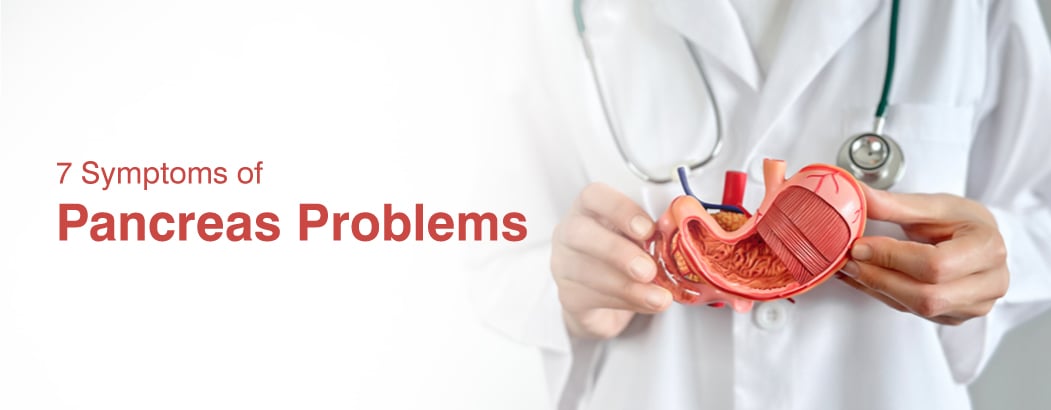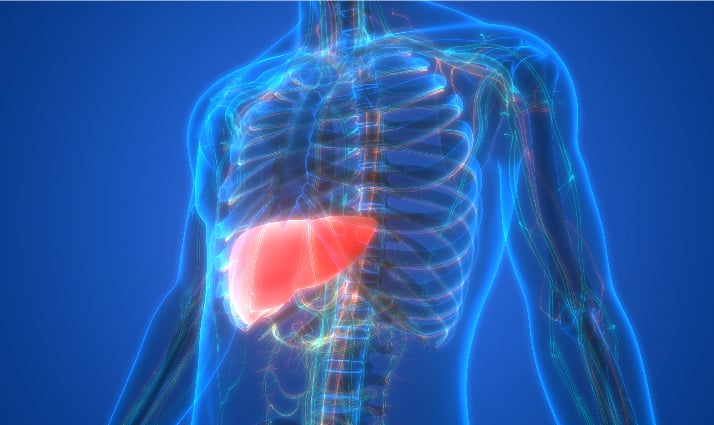7 Symptoms of Pancreas Problems
September 13, 2023

Introduction
A crucial organ located at the back of the stomach is known as the pancreas; it participates in digestive and metabolic procedures. Nonetheless, when this important gland has problems, such problems may result in a number of symptoms that need to be addressed. This article explains the most significant signs of pancreas complications and how they are initiated, while also highlighting the need for prompt consultation with physicians. This is where understanding these warning signs becomes necessary. They will allow an individual to deal with matters pertaining to the state of their pancreas in a proactive manner.
Table of Contents
- Introduction
- 7 Symptoms of Pancreas Problems
- Abdominal Pain
- Digestive Issues
- Unexplained Weight Loss
- Jaundice
- Changes in Stool Color
- Blood Sugar Fluctuations
- Nausea and Vomiting
- Conclusion
- Frequently Asked Questions
7 Symptoms of Pancreas Problems
Abdominal Pain
Abdominal pain is still a common sign and symptom of pancreatic disorders. It usually manifests as a painful and piercing sensation that travels from the top to the bottom of the abdomen. This kind of pain can be chronic, and it goes backwards. Although individuals will have varied locations and intensities of pain, it normally occurs just beneath the lower part of the ribs in the region of the stomach’s upper cavity. Also, note that there could be many reasons for abdominal pain; hence, supplementary clinical symptoms and procedures are necessary for identifying pancreatic impingement.
Digestive Issues
Many people who suffer from pancreas problems usually experience digestion problems. The pancreas is very important when it comes to digestion because it produces digestive enzymes that break food into small particles. When the pancreas gets affected, these enzymes may not get released appropriately, causing digestion problems. Some digestive problems include diarella, bloating, excess gases, and impaired absorption of nutrients. For example, the malabsorption of fats can lead to fatty and stinky stools (steaturrhea). This gives rise to a state of reduced appetite, which makes an individual lose weight as their bodies cannot digest crucial nutrients consumed from the food.
Unexplained Weight Loss
Unexpected or uncharacteristic weight loss can be considered one of the symptoms of many pancreas issues, including some types of cancer. It is common for people to lose weight despite eating regularly if not more than often. Failure of the body to absorb nutrients results in this condition as a result of impaired work of the pancreas. Malabsorption of nutrients such as fats may result in reduced body weight and general health status. Unexplained weight loss is always an indicator of a serious hidden disease and therefore, a healthcare professional should always evaluate it.
Jaundice
Jaundice is a condition where the skin and mucosa turn a yellowish color. This happens when some bilirubin builds up in the blood. Yellow pigment, known as bilirubin, is produced from hemoglobin degradation in red blood cells. Bilirubin cannot be efficiently dealt with and eradicated if the pancreas or the bile ducts are involved. As a result, this leads to the buildup of bilirubin, which causes the skin and eyes’ yellowing. Yellowing is also accompanied by dark urine and pale stools, which are caused by bilirubin buildup.
Changes in Stool Color
A change in color in a stool may suggest a problem with the pancreas, especially the bile ducts. When in good condition, feces should be mostly brown because of the degradation and metabolism of bilirubin in the liver. This is, however, not always the case. At times, when one experiences an obstruction in the normal flow of bile as it flows from the liver to the intestines, the stools can be either whitish or clay coloured. Lack of bilirubin causes this alteration in color, as it is what gives stool its normal brown color. The amount of discoloration varies depending on the level of the obstructed bile flow.
Blood Sugar Fluctuations
The pancreas assumes an important function by controlling blood glucose concentration using secreted insulin. As such, pancreatic disorders may cause great disturbances in glycemic regulation. Two main scenarios can arise:
Insufficient insulin production: the failure of the pancreas to produce enough insulin in situations like diabetes, specifically type 1 diabetes. Consequently, there is excess glucose in their blood, leading to high sugar blood levels and manifestations such as having too much thirst, frequent urinating, extreme tiredness, and unusual weight reduction.
Overproduction of insulin: Pancreas problems can also result in too much production of insulin, leading to hypoglycemia. These conditions include dizziness, sweating, shaking, confusion, etc., and worse still, it can lead to loss of consciousness due to hypoglycemia.
Nausea and Vomiting
Persistent nausea and vomiting can also affect people who suffer from problems associated with the pancreas. These symptoms could lead to severe dehydration and might exacerbate weight loss. They usually have nausea because of digestive disturbances and abdominal pain, as usual. Due to enzyme buildup in the pancreas, the organ can become inflamed, resulting in vomiting as a consequence of the regurgitation of the stomach contents. Proper nutrition and hydration are critical for people experiencing nausea and vomiting. listade.
Conclusion
A pancreas problem may appear in many forms, including impairment in digestion, and metabolism among other factors of general well being. Early recognition of these signs would be vital for early diagnosis and treatment. If the pain persists along with other symptoms like weight loss without any reason, change in stool colour, increase or decrease of sugar levels, or nausea along with vomiting, then one should immediately consult the doctor. Be sure to see a doctor immediately. Early diagnosis and treatment of pancreas related issues are critical so that people can lead a good life after recovery from illness.
Frequently Asked Questions
1. What is the Role of the Pancreas in the Body?
The pancreas has two key functions in the body. To produce necessary hormones (insulin, for example, which regulates a healthy blood sugar level) and necessary excretory enzymes involved in food digestion.
2. Are All Pancreas Problems Associated with Pain?
Pancreas issues involve various types of pain, such as abdominal pain, which does not show in all conditions. However, digestive disorders like diarrhea and constipation, unexplained weight loss and altered stool colour could be secondary signs of some conditions.
3. Can Pancreas Problems be Managed Through Dietary Changes?
Sometimes making necessary changes in food consumption patterns can be helpful for managing the problems of the pancreas, particularly such as digestive issues. However, the treatment depends upon the particular condition and its degree of severity.
4. What Medical Tests are Used to Diagnose Pancreas Problems?
Examples of diagnostic tests for problems in the pancreas may be blood tests, imaging studies, endoscopic procedures, and pancreatic function tests. The appropriate test for that chosen depends on the specified possible condition that a practitioner chooses.
5. Is Pancreas Cancer a Common Cause of Pancreas Problems?
Pancreatic cancer is a widespread and dangerous disease that affects the pancreas. Yet, several other non cancer diseases may affect the pancreas leading to identical signs. Determining the underlying cause of this condition is based on early diagnosis.








